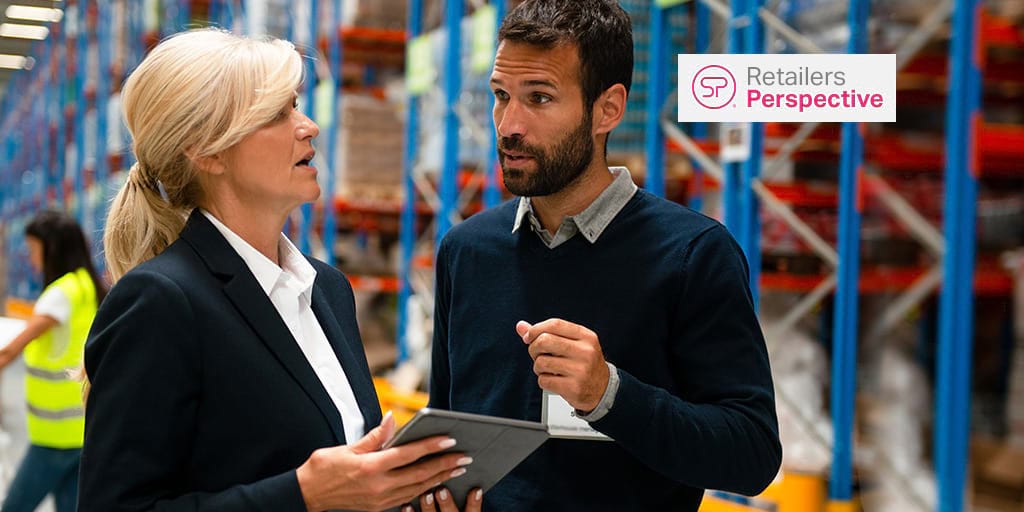The relationship between retailers, brands, store employees, and consumers is symbiotic. Each piece of the puzzle plays an important role, whether it's the brand providing a sellable product, the retailer taking it to market, or the store employee interacting with the end consumer.
As more consumers become educated on specific products' nuances using online research, reviews, and social media, the line between a sale and a walkaway is becoming razor-thin. If retailers get their brands more involved, the benefits go both ways -- the retailer sells more products and gets better support for training its employees, and the brand gains advocates where it matters most, right in front of the customer.
The best experience for a consumer that results in the most sales is one where the brand and the retailer collaborate to make sure the front line is the most educated resource a consumer can find.
Why Should Retailers Get Vendors Involved?
The key value to a retailer of allowing vendor/manufacturer support with training is that their employees become more confident in the products they sell. This confidence leads to better customer engagement and more sales. Why does this happen? Because vendor L&D teams know their products in and out. They possess expertise that is impossible for retailers to have on all of the products they sell in their stores.
Creating and carrying out training can also be expensive and challenging for retailers. Involving vendors allows them to access assistance from someone with a vested interest in getting retail employees trained well.
Retail Training KPIs - What SHOULD You Measure?
High Cost of Training
Retailers spend around $1,075 on annual training per employee–an astronomical number when the average retail turnover is more than 60%. What's worse, much of the traditional LMS content they use for training doesn’t increase sales, and is boring to employees.
Brand/Employee Relationship
Consumers of all ages -- including 62% of Baby Boomers and 58% of Generation Z -- still prefer to shop in a physical retail store. COVID restrictions may come and go for the foreseeable future. However, people still value their in-store experiences of seeing, touching, and trying products before purchase.
Allowing manufacturers to build relationships with your employees helps with product knowledge retention and translates into more sales. Although you can develop training on your brands' products, the brands themselves can speak much better about their features, benefits and brand story. Developing the right kind of training with your vendors enriches your training portfolio by leaps and bounds.
Improving the Consumer Experience
Focus on the consumer experience is the name of the game in the twenty-first century. If consumers’ experience isn't great, they're not going to come back, and that hurts store sales. Over 43% of shoppers say that they are likely to spend more money with retailers who offer a meaningful in-store shopping experience.
Retail employees are the face of the retail outfit and the face of the brand they're selling. Brands want their stories told in a certain way, just like they want their branding done in a certain way. This consistent experience is critical to their sales. They want their products sold in the manner intended (and researched), demonstrating key selling points and highlighting specific features and benefits.
When retail employees are armed with the same key selling points “as seen on TV”, it empowers them and creates a more confident salesperson, and better matches the brand's intention. These valuable features, competitive insights, and insider information are best provided by the brands themselves.
New eBook: The Ultimate Guide to Training Retail Employees
Getting Vendors Onboard
Tapping into vendor support makes sense. But will vendors help if you ask? Smaller and even midsize retailers may not have enough clout to get their vendors to invest in their training–although there are options for these retailers, which we will get into later.
Larger retailers can nearly require participation of vendors, or at least can make fairly straightforward requests. You should be prepared with a list of exactly what you want from each of your vendors. These could include:
- Sales collateral
- Training videos
- Insider scoop/behind the scenes
- Presentations
- Prizes and incentives for the sales team
How SellPro Connects Retailers and Vendors
SellPro is a unique engagement and training platform that enables retailers to connect to vendors like no LMS solution can. Our platform allows vendors to access and create training directly for retailers' employees. And vendors are inclined to help because SellPro offers more visibility into training ROI than any LMS solution on the market.
Having such visibility resolves a huge complaint vendors have with even large store chains—that there is a distinct lack of transparency in how L&D content makes a difference at the store level. There are usually only high-level training statistics provided to vendors, making it impossible for them to gauge benefit and decide on future investment. SellPro's platform gives real-time transparency and analytics, which helps vendors identify ROI and offers the opportunity for training to be adjusted where required.
SellPro's value to large retailers is they can team with vendors to train their own employees in ways proven to drive sales, with reporting to back it up. And for smaller retailers, accessing SellPro's platform gives them more training tools, a lot quicker, and more frequently.
Utilizing SellPro's mobile-based training software helps retailers create a better experience for the customer through their employees. Vendors have direct access to employees, creating specific content that helps overall sales goals. By engaging employees through SellPro's gamification, product knowledge quizzes, incentives, and more, the retailer benefits by eliminating expensive in-house training and allowing the brand to foster relationships directly.
Find out how to get started on involving your manufacturers and brands as part of your retail training.
Schedule a demo with our experts today.
Additional Resources
Where Retailers Go Wrong in Learning & Development
Using Empathy to Create Customer Experiences


